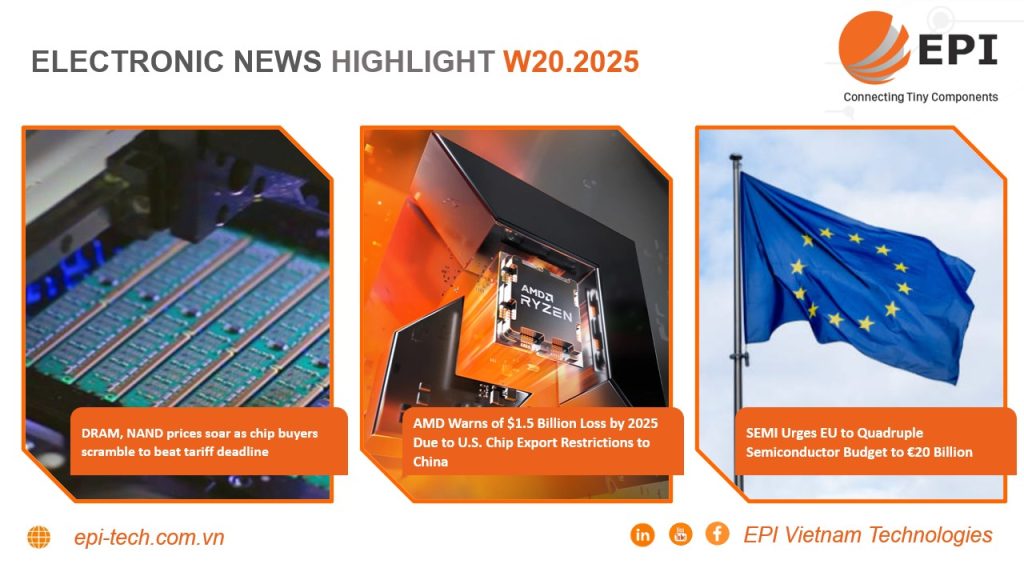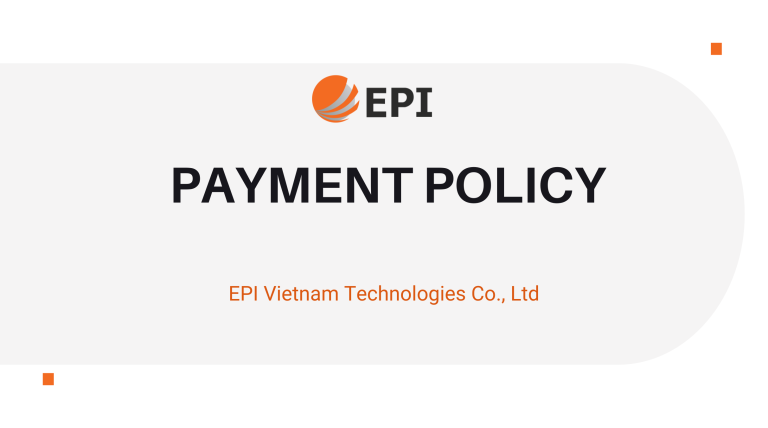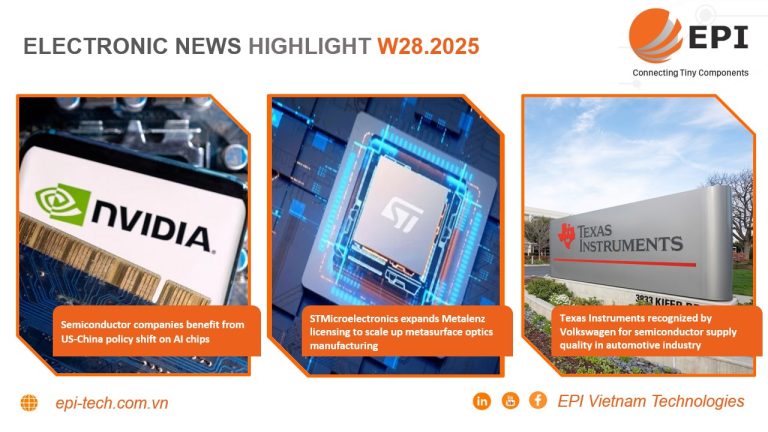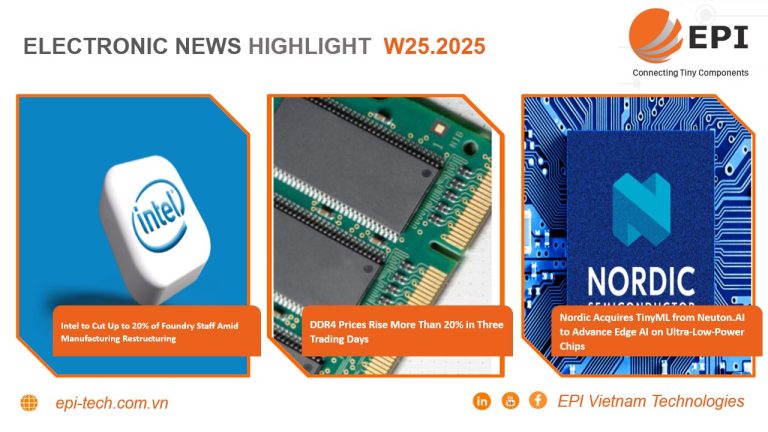ELECTRONICS NEW HIGHLIGHT W20.2025

1. DRAM, NAND prices soar as chip buyers scramble to beat tariff deadline
Memory chip prices surged in April as IT hardware makers rushed to stock up on inventory ahead of the US tariffs, pushing up fixed contract prices for DRAM and NAND and boosting prospects for South Korean chipmakers.
According to DRAMeXchange, the fixed price of the popular 8Gb DDR4 DRAM, widely used in personal computers, rose to $1.65, up 22.22% from March. Meanwhile, 128Gb multi-level cell (MLC) NAND flash memory, used in USB drives and memory cards, rose 11.06% to $2.79.
Industry sources attributed the price hike to increased purchases by major OEMs during the 90-day tariff extension announced by the U.S. government. With inventories running low and geopolitical uncertainties looming, demand has surged across the memory industry.
Fixed prices refer to prices set in contracts between semiconductor suppliers such as Samsung Electronics and SK hynix and their major customers. The recent memory price hike is expected to contribute positively to the second-quarter earnings of these leading memory chipmakers.
Learn more: DRAM, NAND prices soar as chip buyers scramble to beat tariff deadline
2. AMD Warns of $1.5 Billion Loss by 2025 Due to U.S. Chip Export Restrictions to China
AMD said Tuesday it expects to lose $1.5 billion in revenue by 2025 due to tighter U.S. restrictions on exports of advanced chips to China, underscoring the growing impact of trade controls on the semiconductor sector.
Updated regulations in April require chipmakers to obtain licenses to ship high-performance AI processors to China — a market that accounts for about a quarter of AMD’s annual revenue. CEO Lisa Su said the bulk of the financial impact would come in the second and third quarters of 2024, but stressed that AI-related data center sales are still on track for strong double-digit growth this year.
AMD flagged $800 million in charges related to the new export restrictions. The company now expects full-year adjusted gross margin of 43%, down 11 percentage points from excluding those charges. Despite the restrictions, AMD forecast second-quarter revenue of about $7.4 billion, plus or minus $300 million, beating Wall Street expectations. Analysts said customers are likely to step up purchases ahead of stricter enforcement.
Chief Financial Officer Jean Hu said the $1.5 billion hit came from the latest round of U.S. controls, which further restrict shipments of AI chips to China. Nvidia, which is also facing similar licensing requirements, recently warned of a potential $5.5 billion hit to revenue from tighter regulations.
Learn more: AMD Warns of $1.5 Billion Loss by 2025 Due to U.S. Chip Export Restrictions to China
3. SEMI Urges EU to Quadruple Semiconductor Budget to €20 Billion
Global semiconductor industry association SEMI has called on the European Union to quadruple its chip investment budget to €20 billion, urging the creation of a dedicated EU-level fund to promote long-term competitiveness across the entire semiconductor supply chain.
In its official response to the EU’s consultation on the 2028–2034 financial framework, SEMI Europe stressed that such a move could unlock more than €260 billion in combined public and private investment. The EU’s 27 member states are currently seeking input from stakeholders, with a final budget plan expected in July.
SEMI warned that Europe’s reliance on national funding risks widening regional disparities and slowing progress towards strategic independence in the semiconductor sector. The group argued that a centralised budget would promote a level playing field and accelerate the continent’s industrial development.
Despite the €43 billion Chips Act, which was introduced to boost domestic chip production, the European Commission has so far allocated only €4.5 billion, according to a report by the European Court of Auditors published in late March. About 80% of current public funding comes from national governments, not Brussels.
SEMI also points to significant technological gaps in areas such as advanced process chips, AI semiconductors and quantum computing – areas where Europe currently lags behind global competitors. The EU has set a target of accounting for 20% of global chip production by 2030, but auditors now expect it to reach just 11.7% by that date, casting doubt on the bloc’s ambitious target.
Learn more: SEMI Urges EU to Quadruple Semiconductor Budget to €20 Billion
#ASEAN #AsiaPacific #FarEast #distributor #Global #electronicdistributor #PCBA



 English
English  Tiếng Việt
Tiếng Việt 













